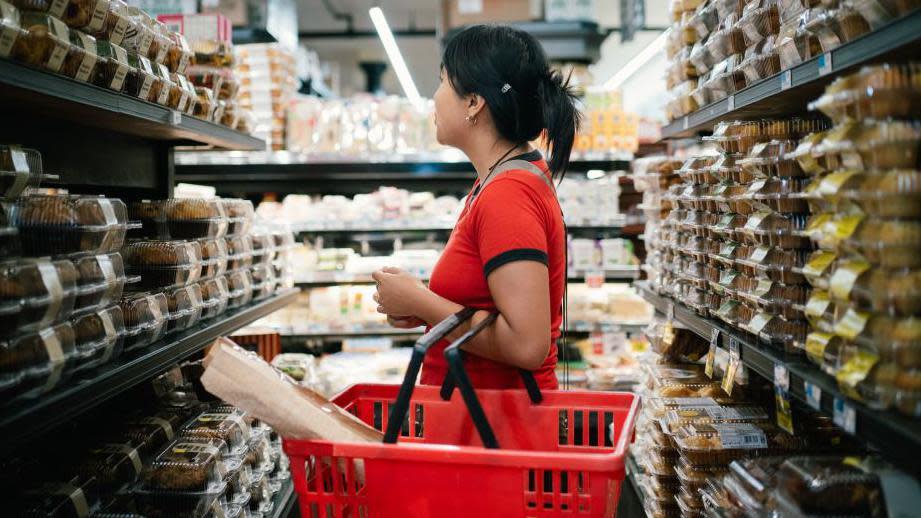Slowest US inflation since 2021 raises rate cut hope

Consumer prices in the US rose at the slowest pace in more than three years last month, bolstering the case for the central bank to start cutting interest rates.
Overall, prices rose 2.9% over the 12 months to July, the smallest annual increase since March 2021 and down from 3% in June, the Labor Department said.
The monthly inflation report was being closely watched after signs of weaker-than-expected jobs growth in July sparked stock market turmoil and recession fears earlier this month.
Analysts said the figures should help convince the Federal Reserve that high borrowing costs are working to return inflation back to normal, despite upticks in housing and food costs.
The Federal Reserve has held its key lending rate at 5.3% - a roughly two-decade high - since July 2023, a move that has hit the public in the form of higher rates for mortgages, credit cards and other loans.
By keeping rates high, the bank is hoping to discourage borrowing and cool the demand pressures that were helping drive up prices of homes, cars and other items.
But the central bank is under pressure to cut rates as inflation, which tracks the pace of price increases, has started to move closer to its 2% target rate, helped by lower oil prices and resolution of Covid-era supply chain crunches.
The three major stock indexes in the US were little changed after the report, which came in roughly as expected.
Julian Howard, chief multi-asset investment strategist at GAM Investments, said a rate cut in September now looked "all but certain".
But he said he thought the Fed would remain cautious about signalling the path ahead, pointing to last month's uptick in inflation in the UK, where the Bank of England recently cut rates.
"While the UK's higher-than-2% figure, was to an extent expected, it is still slightly jarring when inflation comes in higher than the target after a recent rate cut," he said.
"Whatever the Fed does in September, it will be very keen to convey ongoing data dependency from one meeting to the next, rather than setting out a trajectory that might fail to materialise."
Inflation in the US has already receded significantly since June 2022, when it hit 9.1%.
Over the past year, prices for appliances and cars have fallen, along with prices for other items such as airline tickets and furniture.
Petrol prices - a key determinant of economic sentiment in the US - have dropped 2.2%.
But rising prices for household staples such as groceries have kept political pressure on the White House during a presidential election year, weighing on Democrats.
Housing has accounted for more than 70% of inflation over the past year, as rents jumped more than 5%.
Grocery prices also rose 1.1%, while car insurance has soared more than 18%.
In a statement, President Joe Biden said the report showed "progress fighting inflation and lowering costs for American households", while the Trump campaign focused on the 20% rise in prices since 2021, calling the phenomenon "Kamalanonics", after election rival vice-president Kamala Harris.
On Wall Street, the figures left investors divided about how much the Fed should cut rates in September - whether by 0.25 percentage points or more.
Wells Fargo analysts said they were betting on the Fed moving more aggressively to cut rates, despite the acceleration in rents in July.
"Through the see-saw ride of recent monthly prints, the moderation in core inflation has broadened beyond goods, with services inflation—most notably housing—also cooling over the past year," economists led by Sarah House wrote.
"The continued steady slowdown in inflation, when paired with the rise in the unemployment rate and deterioration in other labor market indicators, leads us to believe the [Fed] will want to move quickly."